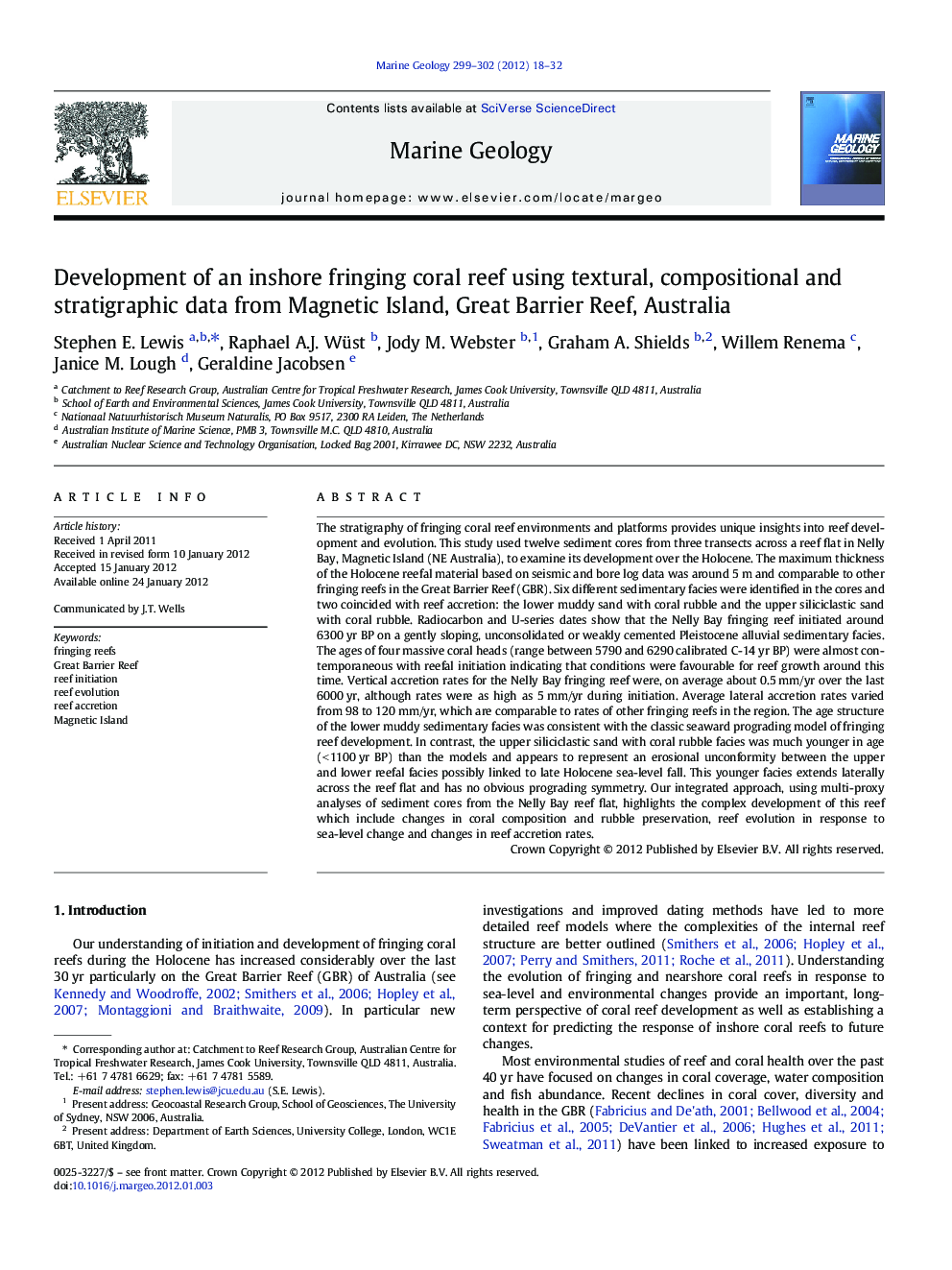| کد مقاله | کد نشریه | سال انتشار | مقاله انگلیسی | نسخه تمام متن |
|---|---|---|---|---|
| 4718590 | 1639127 | 2012 | 15 صفحه PDF | دانلود رایگان |

The stratigraphy of fringing coral reef environments and platforms provides unique insights into reef development and evolution. This study used twelve sediment cores from three transects across a reef flat in Nelly Bay, Magnetic Island (NE Australia), to examine its development over the Holocene. The maximum thickness of the Holocene reefal material based on seismic and bore log data was around 5 m and comparable to other fringing reefs in the Great Barrier Reef (GBR). Six different sedimentary facies were identified in the cores and two coincided with reef accretion: the lower muddy sand with coral rubble and the upper siliciclastic sand with coral rubble. Radiocarbon and U-series dates show that the Nelly Bay fringing reef initiated around 6300 yr BP on a gently sloping, unconsolidated or weakly cemented Pleistocene alluvial sedimentary facies. The ages of four massive coral heads (range between 5790 and 6290 calibrated C-14 yr BP) were almost contemporaneous with reefal initiation indicating that conditions were favourable for reef growth around this time. Vertical accretion rates for the Nelly Bay fringing reef were, on average about 0.5 mm/yr over the last 6000 yr, although rates were as high as 5 mm/yr during initiation. Average lateral accretion rates varied from 98 to 120 mm/yr, which are comparable to rates of other fringing reefs in the region. The age structure of the lower muddy sedimentary facies was consistent with the classic seaward prograding model of fringing reef development. In contrast, the upper siliciclastic sand with coral rubble facies was much younger in age (< 1100 yr BP) than the models and appears to represent an erosional unconformity between the upper and lower reefal facies possibly linked to late Holocene sea-level fall. This younger facies extends laterally across the reef flat and has no obvious prograding symmetry. Our integrated approach, using multi-proxy analyses of sediment cores from the Nelly Bay reef flat, highlights the complex development of this reef which include changes in coral composition and rubble preservation, reef evolution in response to sea-level change and changes in reef accretion rates.
► Performed a multi-proxy analyses of fringing reef cores from Nelly Bay.
► Compositional changes in our reef cores provide evidence of environmental changes.
► The reef top facies is an erosional unconformity linked to recent sea-level fall.
► New data on reef initiation, vertical and lateral accretion for fringing reefs.
Journal: Marine Geology - Volumes 299–302, 1 March 2012, Pages 18–32